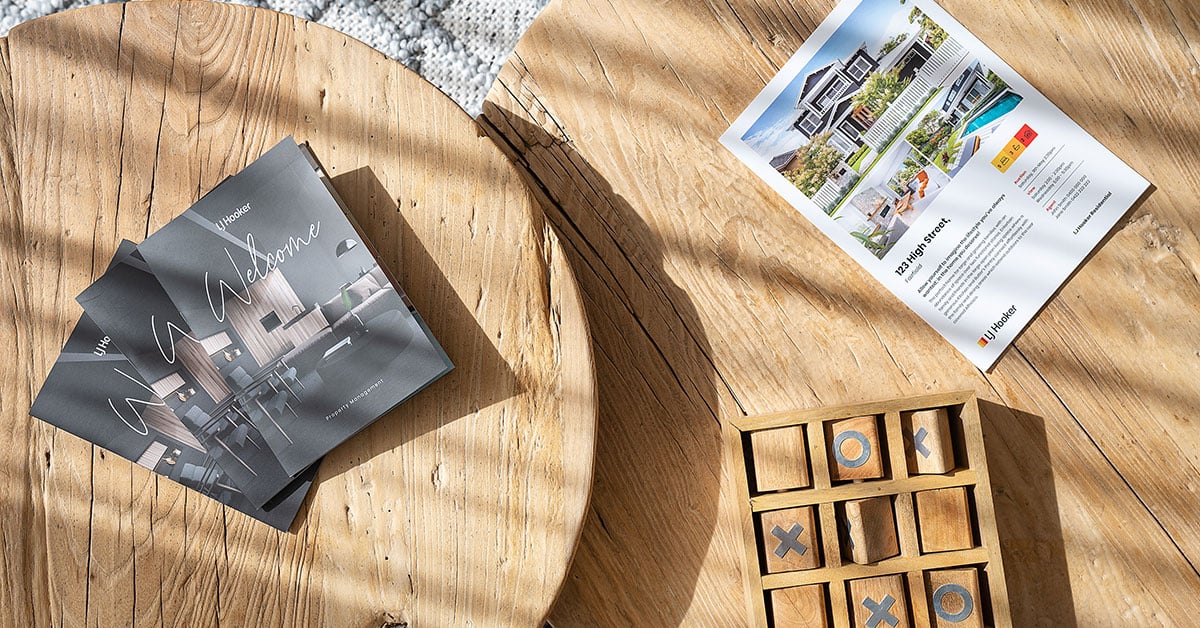A Guide To Selling a House With a Mortgage

We all dream of being mortgage free but it takes most people 25 years to pay off a home loan. So, chances are you will still be making repayments even when it comes time to sell.
Just how do you list your house on the market when technically you co-own it with the bank? It may sound tricky, but it is surprisingly simple to navigate selling a property with a mortgage. Even if you haven’t made much of a dent in your loan, you still have options.
In fact, you can move your current mortgage onto your next home allowing you to upgrade or downsize. Or perhaps even leave the market altogether.
Before you start planning your next move it is important to take time to understand how your home loan works and your obligations to your lender. This also includes what fees to expect and the time needed to complete a transaction.
A good start is to have your property appraised to find out how much it is worth. Then work out how much will be left on your mortgage and the amount needed to fund your next residence.
To help, we’ve put together this guide to selling mortgaged property.
How can I sell my house while paying a mortgage?
Australians are holding onto their homes longer than ever, however, it is still considerably shorter than the typical 25 to 30-year principal and interest home loan.
The latest CoreLogic figures show that, nationally, the average length of ownership is just over 11 years for houses and nine and a half years for units. So, remember selling a home with a mortgage is common.
The first step is to talk to your bank or lender and let them know you are planning on selling your property. They hold what is known as the 'Certificate of Title' on your home. In other words, they have a formal interest in it. This gives them the authority to sell the property if you default on your repayments. It also means they want to be paid back in full when you decide to move.
How does selling a house with a mortgage work?
You will be asked to fill in a Discharge of Mortgage form which can be found on your bank or lender's website. It will ask for details such as:
- borrowers name
- guarantor name
- solicitor's name
- home loan account numbers
- line of credit
Be sure to read all the information and understand it before lodging as it gives the bank authority to start the process.
Remember it can take between 14 and 21 days for a mortgage to be discharged, so it is important to factor this into your timeline. You will still be responsible for making mortgage repayments right up until the sale is finalised.
Obtaining a settlement or closing statement is also a good tip, as it outlines the closing costs and can give you an idea of any profit.
Your bank will arrange with your solicitor or conveyancer for the outstanding amount on your mortgage to be paid at settlement – this will be taken out of the proceeds of your sale price.
Your lender will also register the discharge of the mortgage with the Land Titles Office in your State or Territory. This means that property is free of any 'encumbrance', which is a legal term referring to restrictions that may prevent a sale. Discharge fees can range from $0 to $550.
Can you keep your existing mortgage and move to a new property?
Moving house doesn’t have to mean moving banks and filling in reams of new paperwork. Home loans have 'portability', meaning they can simply be transferred onto the next property.
It means faster turnaround times and avoiding potential upfront fees when applying for another loan. It also allows you to keep your current loan details, rates, repayments and set-ups.
You’ll need what is known as a 'substitution of security'. This removes the mortgage from your current property and carries it over to the new home.
Your lender may also make it very attractive to keep your existing loan by offering better interest rates to retain your business. Or you may decide that it is time to refinance your mortgage when you move.
If you plan on paying off a huge chunk of your mortgage, be prepared to incur additional fees from your bank. These are known as 'break costs' because you are breaking the term of the home loan.
It only applies to fixed-rate mortgages, and the amount varies depending on how much you owe and the length of the loan. Check with your lender, as it may not be high enough to dissuade you from switching lenders.
What happens if I sell my house for less than the mortgage?
Australian homeowners have benefited from booming prices in recent years, but the property market doesn’t always keep rising.
While it's uncommon for the outstanding balance on a mortgage to be higher than the value of a home, it does happen. Purchasing at the top of the housing cycle, heavily redrawing on your home loan, paying too much for a property or securing a property with a low deposit can put you at risk of what is known as having 'negative equity'.
Brand-new homes and apartments are often also at risk because they tend to sell for a premium.
Any shortfall in paying off your mortgage on settlement will need to be made up from personal savings or selling assets, such as a car. If you cannot make up the difference, your lender will ask your mortgage insurer to cover the difference. They will then try to recoup the outstanding debt from you.
Can I buy another property before selling my existing home?
As most of your equity will be tied up in your current home, it can be tricky to buy another property before selling. There are a number of options that can make it possible but can depend on market conditions. The main ones include:
- Contingent offer – you agree to buy a home on the condition that you are unable to settle until your current home has sold. Sellers, however, are less likely to want to go for this option.
- Bridging loan – this is an additional short-term loan taken on top of your existing mortgage. It gives an additional 6 to 12 months to sell your property. It comprises your existing home loan, the purchase price of the new property and associated costs such as stamp duty, legal costs and lenders fees. It can be riskier in a falling market.
What other fees should you factor in?
On top of banking fees, you will also set aside funds to pay for conveyancing, marketing and agents fee or commission. Be sure to budget around $800 to $2000 to cover the legal costs of the sale, which is handled by a conveyancer or solicitor. Costs vary depending on which states and territories you reside in.
Your real estate agents may ask for a flat fee or operate off a tiered commission. These methods will be discussed and agreed upon before any contracts are signed.
Your agent is also in the best position to advise on a marketing budget. Campaigns are based on where you live, your type of dwelling and market performance. It often includes both digital and printed media.
It may cover:
- digital brochures
- real estate portal listings
- social media posts
- professional photography
- drone footage
- signage
- copywriting
- advertising
Getting started
LJ Hooker is Australia’s most iconic real estate brand. Our agents are there to make the transaction process as smooth as possible. Whether you are selling a property with a mortgage or not, the most important step before going onto the market is to know just how much it is worth.
The journey to find your next home starts with a property appraisal. Our agents at LJ Hooker are able to give you a realistic guide of what you can expect your home to fetch on the market. This is based on comparative data of recent sales, market insight and experience. Contact us today for a free property appraisal.
DISCLAIMER - The information provided is for guidance and informational purposes only and does not replace independent business, legal and financial advice which we strongly recommend. Whilst the information is considered true and correct at the date of publication, changes in circumstances after the time of publication may impact the accuracy of the information provided. LJ Hooker will not accept responsibility or liability for any reliance on the blog information, including but not limited to, the accuracy, currency or completeness of any information or links.



